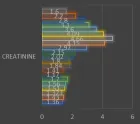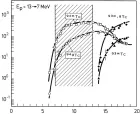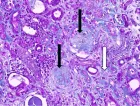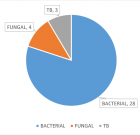Abstract
Research Article
Effect on Vitamin D status of Breastfeeding Infants after Vitamin D3 Supplementation during Breastfeeding Lactation: A double-blind randomized controlled trial
Sathit Niramitmahapanya*, Surasak Kaoiean, Varaporn Sangtawesin, Anusorn Patpanaprapan, Narisa K Bordeerat and Chaicharn Deerochanawong
Published: 04 August, 2017 | Volume 1 - Issue 1 | Pages: 006-014
Background: Vitamin D deficiency in pregnancy increases several risks of breastfed mothers. To prevent these adverse events, vitamin D supplementation during pregnancy and lactation is recommended, but suggested dose ranges vary.
Objective: To determine whether vitamin D3 1,800 IU/d supplementation in lactating mothers improves the vitamin D status of their breastfed infants.
Materials and Methods: A randomized, placebo–controlled trial with Thai pregnant women was conducted. Lactating mothers (n=72) and their breastfed infants with insufficient maternal 25 hydroxyvitamin D (25(OH)D) levels in the third trimester were randomly assigned to two groups, one of which received 1,800 IU/d vitamin D supplementation and the other a placebo. Maternal serum 25(OH)D during lactation, cord blood, and 6-week breastfed infant serum were measured using LC-MS/MS.
Results: Mean maternal age (±SD) was 27±5 years, and pre-gestational BMI was 22.29±5 kg/m2. Maternal serum 25(OH)D at baseline was 22.29±7.15 nmol/L. At 6 weeks, both maternal 25(OH)D and infant 25 (OH)D levels had increased significantly in the vitamin D supplement group of mothers and infants (68.30±15.40, 40.40±12.56 nmol/L) compared to those in placebo groups (55.15±13.57, 24.28±17.20 nmol/L) (p <0.001, p<0.001). The changes in infant 25(OH)D levels increased substantially in the vitamin D supplement group but decreased in placebo(17.49±16.27 ng/ml compared to -1.34±19.23 nmol/L in the placebo group, p<0.001). The change of maternal 25(OH)D were positively correlation to the change of 25(OH)D level in breastmilk mothers and infants by r=0.697, p<0.001 and r=0.379, p=0.003 respectively.
Conclusions: Vitamin D3 supplementation to breastfed mother during lactation can increase serum 25(OH)D level in Thai breastfed mother and infants. Further work is needed to determine the optimum duration of vitamin D supplementation to normalized breastfed infants with 25(OH)D level >75 nmol/L.
Read Full Article HTML DOI: 10.29328/journal.hcem.1001002 Cite this Article Read Full Article PDF
Keywords:
Breastfed infant; Vitamin D supplementation; Lactation
References
- Wayse V, Yousafzai A, Mogale K, Filteau S. Association of subclinical vitamin D deficiency with severe acute lower respiratory infection in Indian children under 5 y. Eur J Clin Nutr. 2004; 58: 563-567. Ref.: https://goo.gl/Z2SXwm
- Roth DE, Shah R, Black RE, Baqui AH. Vitamin D status and acute lower respiratory infection in early childhood in Sylhet, Bangladesh. Acta Paediatr. 2010; 99: 389-393.Ref.: https://goo.gl/1iKH8d
- Belderbos ME, Houben ML, Wilbrink B, Lentjes E, Bloemen EM, et al. Cord blood vitamin d deficiency is associated with respiratory syncytial virus bronchiolitis. Pediatrics. 2011; 127: e1513-e1520. Ref.: https://goo.gl/MSPfza
- Hollis BW, Wagner CL. Assessment of dietary vitamin D requirements during pregnancy and lactation. Am J Clin Nutr. 2004; 79: 717-726.Ref.: https://goo.gl/jGRCDZ
- Dawodu A, Absood G, Patel M, Agarwal M, Ezimokhai M, et al. Biosocial factors affecting vitamin D status of women of childbearing age in the United Arab Emirates. J Biosoc Sci. 1998; 30: 431-437.Ref.: https://goo.gl/6K5osP
- Gannagé-Yared MH, Chemali R, Yaacoub N, Halaby G. Hypovitaminosis D in a sunny country: relation to lifestyle and bone markers. J Bone Miner Res. 2000; 15: 1856-1862.Ref.: https://goo.gl/TuJeEu
- Seth A, Marwaha RK, Singla B, Aneja S, Mehrotra P, et al. Vitamin D nutritional status of exclusively breast fed infants and their mothers. J PediatrEndocrinolMetab. 2009; 22(3): 241-246. Ref.: https://goo.gl/Bh6R9s
- Dawodu A, Tsang RC. Maternal vitamin D status: effect on milk vitamin D content and vitamin D status of breastfeeding infants. AdvNutr. 2012; 3: 353-361. Ref.: https://goo.gl/4pRizF
- Yetley EA. Assessing the vitamin D status of the US population. Am J Clin Nutr. 2008; 88: 558-564. Ref.: https://goo.gl/QedwDQ
- Taylor JA, Geyer LJ, Feldman KW. Use of supplemental vitamin D among infants breastfed for prolonged periods. Pediatrics. 2010; 125: 105-111. Ref.: https://goo.gl/jsRL6K
- Perrine CG, Sharma AJ, Jefferds ME, Serdula MK, Scanlon KS. Adherence to vitamin D recommendations among US infants. Pediatrics. 2010; 125: 627-632. Ref.: https://goo.gl/yya7fL
- Pepper KJ, Judd SE, Nanes MS, Tangpricha V. Evaluation of vitamin D repletion regimens to correct vitamin D status in adults. EndocrPract. 2009; 15: 95-103.Ref.: https://goo.gl/5L88r9
- Binkley N, Gemar D, Engelke J, Gangnon R, Ramamurthy R, et al. Evaluation of Ergocalciferol or Cholecalciferol Dosing,1,600 IU Daily or 50,000 IU Monthly in Older Adults. J Clin Endocrinol Metab. 2011; 96: 981-988. Ref.: https://goo.gl/2yrjvb
- Niramitmahapanya, Kaoiean, Sangtawesin, Patpanaprapan, Bordeerat KN. Maternal Vitamin D3 Supplementation during Lactation Ameliorate Vitamin D Status of Breast-Fed Infants: Randomized Controlled Trial. Proceeding of the 97th Annual Meeting and Expo of Endocrine Society San Diego. 2015; 5-8. Ref.: https://goo.gl/6XmUuS
- Holick MF, Binkley NC, Bischoff-Ferrari HA, Gordon CM, Hanley DA et al. Endocrine Society. Evaluation, treatment, and prevention of vitamin D deficiency: an Endocrine Society clinical practice guideline. J ClinEndocrinol Metab. 2011; 96: 1911-1930. Ref.: https://goo.gl/9tccYh
- Jan Mohamed HJ, Rowan A, Fong B, Loy SL. Maternal serum and breast milk vitamin D levels: findings from the Universiti Sains Malaysia Pregnancy Cohort Study. PLoS One. 2014; 9: 100705. Ref.: https://goo.gl/Exj6BS
- Charatcharoenwitthaya N, Nanthakomon T, Somprasit C, Chanthasenanont A, Chailurkit LO, et al. Maternal vitamin D status, its associated factors and the course of pregnancy in Thai women. Clin Endocrinol (Oxf). 2013; 78:126-133.Ref.: https://goo.gl/8azsyV
- Ala-Houhala M, Koskinen T, Terho A, Koivula T, Visakorpi J. Maternal compared with infant vitamin D supplementation. Arch Dis Child. 1986; 61:1159-1163. Ref.: https://goo.gl/5T3QdH
- Catherine AR, Christine LT, Ann LY, Heather BDV. Dietary reference intakes for calcium and vitamin D. Washington, DC: The National Academies Press. 2011. Ref.: https://goo.gl/cDFbSv
- Birckbeck JA, Scott HF. 25-hydroxycholecalciferol serum levels in breast-fed infants. Arch Dis Child. 1980; 55: 691-695. Ref.: https://goo.gl/7vtyL8
- Lamberg-Allardt C, Salmenper L, Perheentupa J, Siimes MA. Maternal vitamin D supplementation during lactation-effect on infant and mother. In: Norman AW, Schaefer K, Grigoleit H-G, von Herrath D, eds. Vitamin D. Chemical, biochemical and clinical update. Berlin: Walter de Gruyter; 1985: 664-665.
- Rothberg AD, Pettifor JM, Cohen DR, Sonnendecker EWW, Ross FP. Maternal-infant vitamin D relationships during breastfeeding. JPediatr.1982; 101: 500-503. Ref.: https://goo.gl/QvYYHT
- Hillman L, Sateesha S, Haussler M, Wiest W, Slatopolsky E, et al. Control of mineral homeostasis during lactation: interrelationships of 25-hydroxyvitamin D, 24,25-dihydroxyvitamin D, 1,25-dihydroxyvitamin D, parathyroid hormone, calcitonin, prolactin and estradiol. Am J Obstet Gynecol. 1981; 139: 471-476. Ref.: https://goo.gl/NCvEvf
Figures:
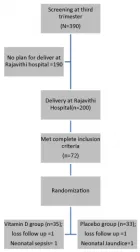
Figure 1
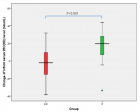
Figure 2

Figure 3
Similar Articles
-
Effect on Vitamin D status of Breastfeeding Infants after Vitamin D3 Supplementation during Breastfeeding Lactation: A double-blind randomized controlled trialSathit Niramitmahapanya*,Surasak Kaoiean,Varaporn Sangtawesin,Anusorn Patpanaprapan,Narisa K Bordeerat,Chaicharn Deerochanawong. Effect on Vitamin D status of Breastfeeding Infants after Vitamin D3 Supplementation during Breastfeeding Lactation: A double-blind randomized controlled trial. . 2017 doi: 10.29328/journal.hcem.1001002; 1: 006-014
Recently Viewed
-
The Accuracy of pHH3 in Meningioma Grading: A Single Institution StudyMansouri Nada1, Yaiche Rahma*, Takout Khouloud, Gargouri Faten, Tlili Karima, Rachdi Mohamed Amine, Ammar Hichem, Yedeas Dahmani, Radhouane Khaled, Chkili Ridha, Msakni Issam, Laabidi Besma. The Accuracy of pHH3 in Meningioma Grading: A Single Institution Study. Arch Pathol Clin Res. 2024: doi: 10.29328/journal.apcr.1001041; 8: 006-011
-
Assessment of Perceptions of Nursing Undergraduates towards Mental Health PracticesAlya Algamdii*. Assessment of Perceptions of Nursing Undergraduates towards Mental Health Practices. Clin J Nurs Care Pract. 2025: doi: 10.29328/journal.cjncp.1001059; 9: 007-011
-
Multipurpose Antioxidants based on Food Industry Waste: Production and Properties EvaluationToshkhodjaev*. Multipurpose Antioxidants based on Food Industry Waste: Production and Properties Evaluation. Arch Food Nutr Sci. 2025: doi: 10.29328/journal.afns.1001062; 9: 001-003
-
Relationship between Fertility Diet Score Index Items and Ovulation in Women with Polycystic Ovary Syndrome: A Narrative ReviewHadis Alimoradi,Faezeh Mashhadi,Ava Hemmat,Mohsen Nematy,Maryam Khosravi,Maryam Emadzadeh,Nayere Khadem Ghaebi,Fatemeh Roudi*. Relationship between Fertility Diet Score Index Items and Ovulation in Women with Polycystic Ovary Syndrome: A Narrative Review. Arch Food Nutr Sci. 2024: doi: 10.29328/journal.afns.1001061; 8: 041-048
-
Evaluation of the LumiraDx SARS-CoV-2 antigen assay for large-scale population testing in SenegalMoustapha Mbow*,Ibrahima Diallo,Mamadou Diouf,Marouba Cissé#,Moctar Gningue#,Aminata Mboup,Nafissatou Leye,Gora Lo,Yacine Amet Dia,Abdou Padane,Djibril Wade,Josephine Khady Badiane,Oumar Diop,Aminata Dia,Ambroise Ahouidi,Doudou George Massar Niang,Babacar Mbengue,Maguette Dème Sylla Niang,Papa Alassane Diaw,Tandakha Ndiaye Dieye,Badara Cisé,El Hadj Mamadou Mbaye,Alioune Dieye,Souleymane Mboup. Evaluation of the LumiraDx SARS-CoV-2 antigen assay for large-scale population testing in Senegal. Int J Clin Virol. 2022: doi: 10.29328/journal.ijcv.1001041; 6: 001-006
Most Viewed
-
Feasibility study of magnetic sensing for detecting single-neuron action potentialsDenis Tonini,Kai Wu,Renata Saha,Jian-Ping Wang*. Feasibility study of magnetic sensing for detecting single-neuron action potentials. Ann Biomed Sci Eng. 2022 doi: 10.29328/journal.abse.1001018; 6: 019-029
-
Evaluation of In vitro and Ex vivo Models for Studying the Effectiveness of Vaginal Drug Systems in Controlling Microbe Infections: A Systematic ReviewMohammad Hossein Karami*, Majid Abdouss*, Mandana Karami. Evaluation of In vitro and Ex vivo Models for Studying the Effectiveness of Vaginal Drug Systems in Controlling Microbe Infections: A Systematic Review. Clin J Obstet Gynecol. 2023 doi: 10.29328/journal.cjog.1001151; 6: 201-215
-
Prospective Coronavirus Liver Effects: Available KnowledgeAvishek Mandal*. Prospective Coronavirus Liver Effects: Available Knowledge. Ann Clin Gastroenterol Hepatol. 2023 doi: 10.29328/journal.acgh.1001039; 7: 001-010
-
Causal Link between Human Blood Metabolites and Asthma: An Investigation Using Mendelian RandomizationYong-Qing Zhu, Xiao-Yan Meng, Jing-Hua Yang*. Causal Link between Human Blood Metabolites and Asthma: An Investigation Using Mendelian Randomization. Arch Asthma Allergy Immunol. 2023 doi: 10.29328/journal.aaai.1001032; 7: 012-022
-
An algorithm to safely manage oral food challenge in an office-based setting for children with multiple food allergiesNathalie Cottel,Aïcha Dieme,Véronique Orcel,Yannick Chantran,Mélisande Bourgoin-Heck,Jocelyne Just. An algorithm to safely manage oral food challenge in an office-based setting for children with multiple food allergies. Arch Asthma Allergy Immunol. 2021 doi: 10.29328/journal.aaai.1001027; 5: 030-037

HSPI: We're glad you're here. Please click "create a new Query" if you are a new visitor to our website and need further information from us.
If you are already a member of our network and need to keep track of any developments regarding a question you have already submitted, click "take me to my Query."







